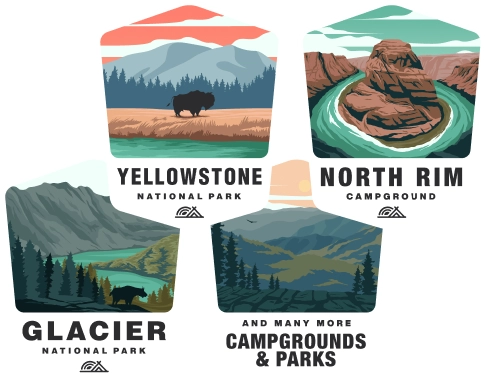Camping at Allegheny National Forest
General Information
Allegheny National Forest, located in northwestern Pennsylvania, is a vast expanse of nearly half a million acres of land offering a wide range of recreational activities, including camping. The forest is known for its breathtaking natural beauty, with forest-covered hills, pristine waterways, and abundant wildlife.
Camping Options
Developed Campgrounds: Allegheny National Forest offers several developed campgrounds with a variety of amenities such as potable water, restrooms, shower facilities, picnic tables, and fire rings. Some popular developed campgrounds include Tracy Ridge, Willow Bay, and Red Bridge.
Dispersed Camping: For those seeking a more remote experience, dispersed camping is allowed throughout the forest, except in designated recreation areas or where posted otherwise. Campers must follow Leave No Trace principles to minimize their impact on the environment.
Permits and Reservations
Campground Reservations: Many campgrounds in the Allegheny National Forest accept reservations, which can be made through Recreation.gov. Some sites may also be available on a first-come, first-served basis.
Camping Permits: For dispersed camping, permits are not generally required, but there are rules to follow regarding distance from water sources, roads, and trails. Always check the current regulations before heading out.
Campfire Safety
Campfires are allowed, but they must be contained within metal fire rings in campgrounds or at dispersed sites. Always make sure fires are completely extinguished before leaving the campsite. During periods of high fire danger, additional restrictions may be imposed.
Weather and Climate
The weather in the Allegheny National Forest can be quite variable. Summer temperatures range from 50°F to 80°F, while winter temperatures can drop below freezing. Precipitation is common year-round, so campers should be prepared for rain or snow depending on the season.
Wildlife and Safety
The forest is home to various wildlife species, including black bears, deer, and numerous bird species. Campers should properly store food and manage waste to prevent attracting animals to the campsite. Always keep a safe distance from wildlife and avoid feeding them.
Leave No Trace
All campers in the Allegheny National Forest are expected to follow Leave No Trace guidelines, which include:
- Plan Ahead and Prepare: Know the regulations and special concerns for the area you'll visit.
- Travel and Camp on Durable Surfaces: Stick to established trails and campsites.
- Dispose of Waste Properly: Pack out all trash and leftover food.
- Leave What You Find: Preserve the past; examine, but do not touch, cultural or historic structures and artifacts.
- Minimize Campfire Impacts: Use established fire rings and keep fires small.
- Respect Wildlife: Observe wildlife from a distance and do not feed them.
- Be Considerate of Other Visitors: Respect other visitors and protect the quality of their experience.
Other Activities
Besides camping, Allegheny National Forest offers various outdoor activities such as hiking, mountain biking, fishing, boating, and wildlife viewing. Over 200 miles of trails provide opportunities for exploration and connecting with nature.
Contact Information
Before planning your camping trip, make sure to check the latest information and any alerts or closures. You can contact the Allegheny National Forest Supervisor's Office or visit the USDA Forest Service website for the most current information:
- Supervisor's Office: 4 Farm Colony Drive, Warren, PA 16365
- Phone: (814) 723-5150
- Website: USDA Forest Service - Allegheny National Forest
Always keep updated on current conditions and regulations to ensure a safe and enjoyable camping experience in the Allegheny National Forest.

